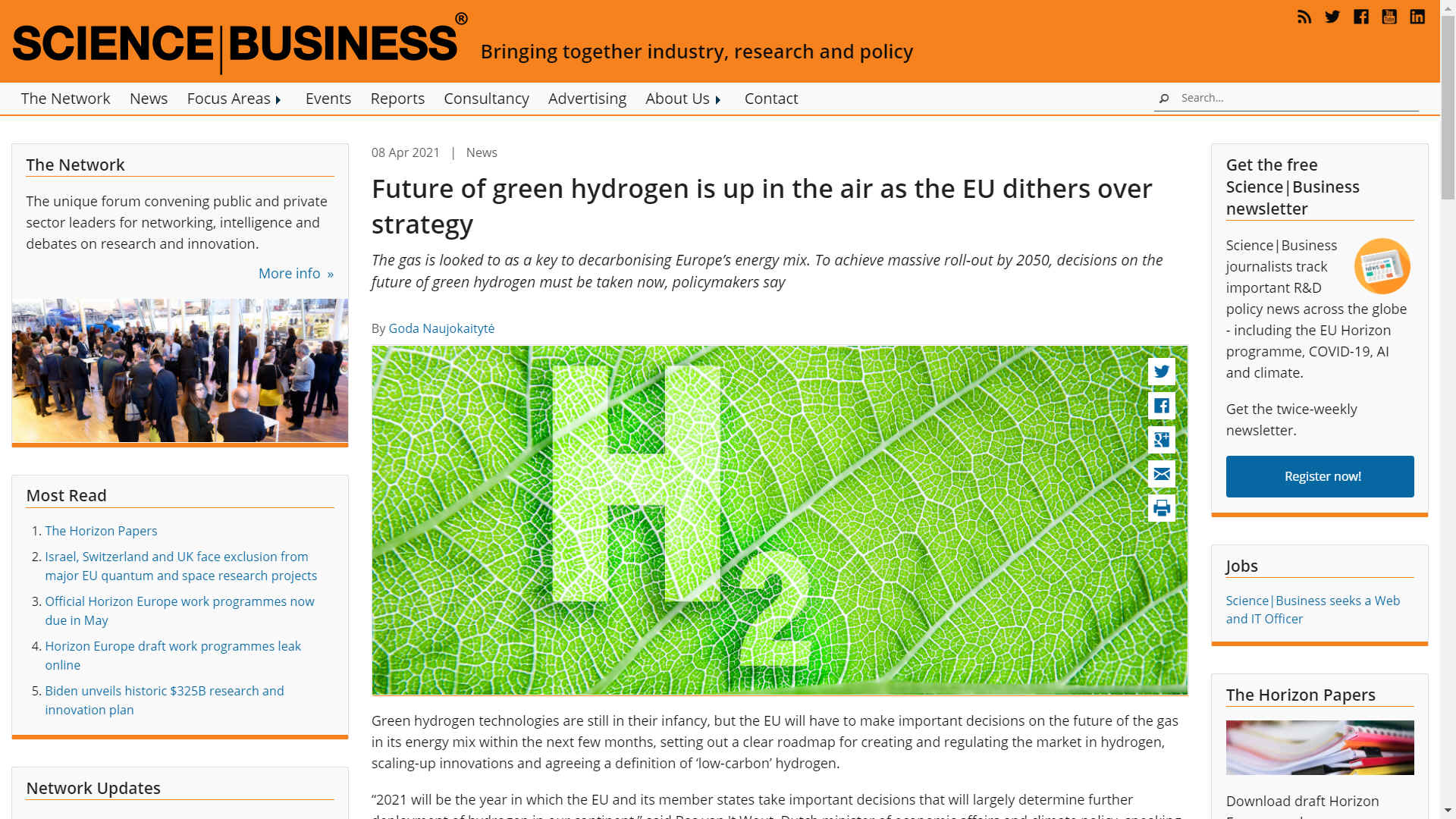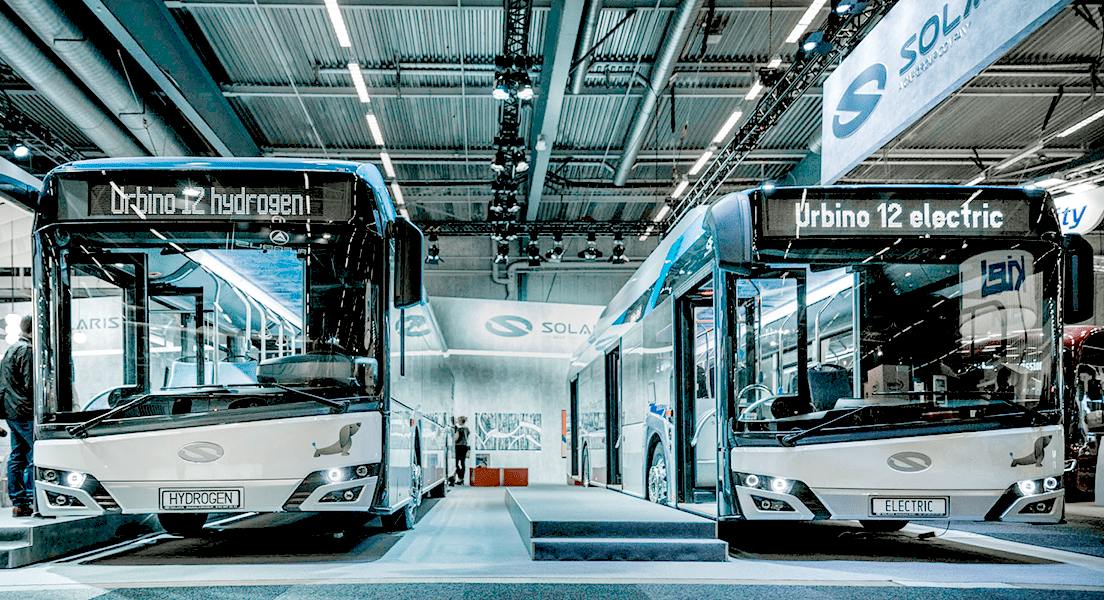|

TRUCKING -
This is the really tough nut to crack, and without it we have a
dysfunctional energy infrastructure. This electric Toyota is powered by
hydrogen fuel cells. Dual purposes service stations hold the potential to
smooth peaks and troughs in renewable energy supply, making a less reliable
infrastructure, more
secure. Surely that qualifies as an IPCEI.
WHAT
IS GREEN HYDROGEN ? Green
hydrogen is hydrogen that is produced using renewable electricity via
electrolysis and industrial electrolisers, as opposed to production from fossil
fuels, such as with Brown,
Gray, Blue
or Turquoise
hydrogen production methods. Ideal for zero
emission transport like the Elizabeth Swann: SolarSport
HydroRacer. To
make the best use of 'green' renewable
energy, we need load levelling to
smooth out the peaks of troughs of weather variations, to provide reliable
electricity supplies via national grids. In an electrical circuit, we use
capacitors to smooth current flow, on a larger scale, bulk energy storage
depots are the capacitors of any national
grid. At
the present time storage depots use lithium battery and other technology.
But we can convert the electrical energy into hydrogen gas and condense the
gas into liquid for transport use, especially to stock Smart Service
Stations (SSSs) for road vehicles, light aircraft, river and coastal marine
applications. In this manner, the SSS's serve as energy depots for load
levelling, without the need for giant gas
holders. 
SCIENCE
BUSINESS 8 APRIL 2021 - Future of green hydrogen is up in the air as the EU dithers over strategy The gas is looked to as a key to decarbonising Europe’s
energy mix. To achieve massive roll-out by 2050, decisions on the future of green hydrogen must be taken now, policymakers say
Green hydrogen technologies are still in their infancy, but the EU will have to make important decisions on the future of the gas in its energy mix within the next few months, setting out a clear roadmap for creating and regulating the market in hydrogen, scaling-up innovations and agreeing a definition of ‘low-carbon’ hydrogen.
“2021 will be the year in which the EU and its member states take important decisions that will largely determine further deployment of hydrogen in our continent,” said Bas van 't Wout, Dutch minister of economic affairs and
climate policy, speaking at conference on hydrogen organised by the Portuguese Council Presidency.
Hydrogen is seen as a critical component of greening Europe’s energy market and delivering on the aim of becoming the first carbon-neutral continent by 2050. While renewable electricity will lead the way, hydrogen is expected to replace natural gas in industries that cannot be easily electrified, such as
steel production and aviation. In 2050, the gas could make up as much as 23% of the EU energy mix.
The problem is that most hydrogen today is grey rather than
green. It is made by reforming natural gas, a process that releases large amounts of CO2 into the atmosphere. The EU hopes to build its future energy mix on green hydrogen produced through electrolysis, where
electricity from a renewable source is passed through
water to separate hydrogen and
oxygen.
The European Commission presented the
EU hydrogen strategy in July 2020, setting goals for the scale-up of renewable hydrogen technology and calling for €470 billion in investments for the next thirty years. By 2030, the
Commission hopes to have 40GW of electrolysers in the EU, producing up to 10 million tonnes of renewable hydrogen each year.
As with other renewable
fuels, there is a cost barrier to get over, in that currently electrolysers are costly and not efficient enough to power a competitive hydrogen economy. To bring the technology to the market, the EU needs to make major investments in research and innovation.
Europe is not alone in looking to capitalise on hydrogen as a green energy source. In January, Canada launched the world’s largest green hydrogen plant, while in November Chile presented plans to produce the world’s cheapest green hydrogen by 2030.
“Hydrogen has a high global potential. It has a global profile, and it is basically the flavour of the month,” said Anna Krzyzanowska, advisor at the European Commission to the Mission Innovation Steering Committee, a global intergovernmental initiative working to accelerate clean energy innovation.
This has both good and bad implications for Europe. The good news, Krzyzanowska says, is that more money will be invested in green hydrogen to reach the technology tipping point. The bad is that Europe must act quickly and not waste any time to secure its share of the pie and step-up global collaboration.
But to act, the EU still needs a how-to. Last December, member states asked the Commission “to further elaborate and operationalise” the EU hydrogen strategy, outlining a pathway for reaching the goal of having 40GW of electrolysers by 2030.
Hydrogen fuel cells are a fantastic way to generate electricity from energy dense hydrogen, that can be produces using renewable energy. This means they are a great option for low carbon transportation, especially as the distances get longer! However, aviation has always been a challenge. Thankfully, ZeroAvia have been working on an amazing new technology: turbo charged air cooled high-temperature pem fuel cells. These have much higher power densities and therefore enable long distance hydrogen electric flight. I went to their labs to check it out!
Member state priorities
EU member states will next discuss the future of hydrogen in June. But while more and more member states are launching their own hydrogen strategies and coordinating joint projects, they do not see eye to eye on some key issues, such as what counts as ‘low-carbon’ hydrogen.
The Netherlands, for one, supports using fossil
fuel-derived hydrogen during the transition period to renewable hydrogen. Storing the
CO2 emitted in the process instead of releasing it into the atmosphere produces
blue
hydrogen, an arguably low-carbon alternative to green hydrogen. Some countries believe it should be used to build up a hydrogen economy while green hydrogen costs remain high.
But countries hoping to export the green gas want to go directly to producing hydrogen from water using electricity from renewable sources. “We are only one or two investment cycles away from 2050. It’s more critical than ever to avoid investments and policy decisions which may lock us into fossil dependence or become stranded assets,” said Sara Aagesen Muñoz, Spain’s secretary of state for energy.
In the end, it comes down to different national strategies. The Netherlands does not have the renewable
electricity capacity to become a major hydrogen producer and is focusing instead on creating the infrastructure. “One of the main aims [of our strategy] is the development of a hydrogen backbone by
re-purposing part of our gas infrastructure,” said van 't Wout. “With this backbone, we will be able to connect the major industrial clusters in the Netherlands and possibly in north western Europe to multiple hydrogen sources.”
Spain, on the other hand, has rich renewable energy resources, and prioritises scaling up electrolyser technology, adapting industrial processes to green hydrogen and exploring the potential of storing hydrogen in its plan, which foresees a €1.5 billion investment from the EU pandemic recovery fund.
Claude Turmes, Luxembourg’s energy minister, in support of green hydrogen, suggested carrying out a review of the EU Emission Trading System, to ensure it stimulates the move from
fossil fuels to renewable hydrogen.
In the end, investing in electrolysers is “the most important question for the future of hydrogen,” said Turmes. Investing in
blue hydrogen does not help the cause, he added.
In the renewable energy space, a lot of excitement is building up around green hydrogen. This is a clean way of making hydrogen that does not require carbon inputs and produces no emissions other than oxygen.
Since green hydrogen could be a very lucrative business that would also help countries meet their emission reduction targets, many companies are investing big in this potential future. But how far along is the technology, and what still needs to happen for it to become as mainstream as gasoline or batteries?
Forbes Senior Editor Alan Ohnsman, who specializes in future mobility and energy, visited a few big players in the green hydrogen space to find out.
Electrolyser capacity
Alongside member state initiatives, the Commission is deploying a number of tools to bring the hydrogen economy to life.
In Horizon
Europe, the EU’s research programme, seven public-private partnerships will work on technology for the hydrogen economy.
With an EU contribution of €1 billion matched by industry money, the Clean Hydrogen Partnership for Europe will develop technology for producing, distributing and storing clean hydrogen. The partnership is a continuation of a previous 12-year initiative between the Commission and the industry, which boosted electrolyser capacity from 0.15MW in 2011 to 100MW in 2021. The regulation for the new partnership is currently in the hands of the member states. Once it is settled, the Commission hopes to launch it by the end of the year.
Six other Horizon Europe initiatives will focus on decarbonising rail, aviation and
steel, among other sectors, developing hydrogen-powered alternatives in the next seven years.
Scale-up will require synergies between different programmes. Here, member states hope the European Research Area (ERA) will help catalyse innovation.
The global push for net zero carbon emissions is one of humanity's greatest challenges. In this film, the FT's Simon Mundy explores how hydrogen - the lightest, most abundant element in the universe - could play a crucial role. From southern Spain to Swedish Lapland, we meet those at the forefront of this fast-growing space - all seeking a share of the billions to be made in the emerging hydrogen economy.
Last year, member states renewed their commitment to creating a common European market for research, after the failed first attempt initiated 20 years ago. Now, they hope it can enable hydrogen innovation through partnerships and joint investments, according to December Council conclusions.
In December, member states also launched an “Important Project of Common European
Interest” for hydrogen, a legal framework for big cross-border projects, which allows member states to coordinate and fund innovation in the hydrogen value chain.
Christian Holzleitner, head of unit for land use and finance for innovation at the Commission, says Europe already knows how to get to its final destination. “The challenge that we have is to up-scale all of these technologies and to put them on the market,” he said.
Here, money is needed. While technologies for producing hydrogen are still significantly more expensive than fossil fuel, the EU is ready to help level the playing field. In the next decade, the European Investment Bank can provide enough financing to cover 60% of the gap in pricing between
fossil fuel and hydrogen technologies, Holzleitner said.
But for once, the money does not seem to be the main issue. Right now, “setting a clear vision is key,“ said EU energy commissioner, Kadri
Simson. By Goda Naujokaitytė

MULTI
PURPOSE - The same service station that provides freshly charged
hydrogen batteries, doubles up as an energy store for the national grid of
the country concerned. Why put in load levelling stations that only have one
function?
CERTIFHY
SCHEME Hydrogen as an energy carrier offers an important solution to decarbonise industrial processes and economic sectors where reducing
carbon emissions is both urgent and hard to achieve.
Hydrogen may be produced through a variety of pathways, each one with its own range of emissions depending on the technology and energy source used. It is therefore indispensable to have a robust and reliable instrument in place to guarantee the environmental characteristics of the hydrogen product.
Currently the EU is leading the way in hydrogen certification through an FCH JU project CertifHy that started back in 2014. The project succeeded at delivering a design for a Guarantees of Origin Scheme for Hydrogen and developed a roadmap for its establishment. The FCH2 JU continued to support this initiative for a second phase where the Guarantees of Origin Scheme was tested in a pilot operation, while tackling the complexities and challenges in the full chain from auditing the plants to verification of hydrogen production batches and handling GHG allocation issues.
Now the FCH2 JU is ready to proceed with the third phase of this initiative, where it will support the harmonisation efforts in the establishment of Guarantees of Origin Schemes for Hydrogen across Member States. In an even more ambitious move, the FCH2 JU will try to facilitate the harmonization of hydrogen certification at an international level, ensuring that we have a common agreement worldwide on how to characterize renewable and low-carbon hydrogen products.
MARCH
2020 Hydrogen vehicles have been around since the
Ford Model A. Hydrogen fuel cells have been used for years by the military and NASA. Hydrogen is used as a rocket fuel and is dominant in buses and forklifts. However, the U.S. has only 300 hydrogen cars (mostly in California) and only 48 retail fueling stations (43 are in California). But things are changing with the price of hydrogen fuel, its production source and business model for transport fuel.
Currently, U.S. production of hydrogen is nine million metric tons (t) per year, or 20 billion pounds. A pound of hydrogen has 62,000 BTUs, or almost three times that of gasoline (21,000 BTUs per pound). So, from an energy standpoint, the U.S. has a 60 billion gasoline-gallon equivalent (GGE), or enough hydrogen to power 30% of all autos in the United States.
Hydrogen has many applications: food processing, metal fabricating, fertilizer manufacturing and pharmaceuticals. It is a major component in
de-sulfurization at petroleum refineries, which is why 90% of all hydrogen is today produced only in three states: Louisiana, Texas and California.
Presently, hydrogen costs $14/kilogram which is $5.6/GGE. With cheap power and new technology, that cost will fall to $5/kilogram, bringing the GGE to $2. Gasoline costs 10 cents/mile at $2.50/gallon. $5/kilogram of hydrogen is 10 cents/mile given the energy content and efficiency of hydrogen. Consumers may welcome hydrogen cars since they do not come with the range anxiety of electricity nor the expense of gasoline-fueled vehicles. Several manufacturers have announced plans for major U.S. hydrogen vehicle production including:
Honda - Nexo
Hyundai - Tucson
Toyota - Mirai
Mazda - Rx-8RE
Nissan - unnamed
BMW
- unnamed
It’s reported that hydrogen vehicle sellers plan to bundle five years of fuel at the time of vehicle purchase, with in-vehicle devices showing fueling locations and fuel balances. Even Class 7 and 8 trucks that were never viable candidates for electric because of distance and torque issues are moving down the path to hydrogen, with Kenworth,
Nikola, U.S. Hybrid and Toyota in the testing phase.
LINKS
& REFERENCE https://www.convenience.org/Media/Daily/2020/Mar/31/6-Is-Hydrogen-Future-of-US-Transport-Fuel_Fuels

Hydrogen
powered electric buses are becoming very popular. With exchange refuelling
using high pressure gas cartridges, or liquid
hydrogen cartridges, coaches and trucks might have unlimited ranges. We hope
this is a topic of discussion at the forthcoming UN
COP 26 in Glasgow, Scotland in November 2021.

JULY
2015
- Two electric aircraft crossed the English Channel, just a day apart. The
performance of the Airbus E-Fan could be doubled using hydrogen batteries.

CHANNEL
HOPPER
- Electric ferries and river boats like the proposal above, could supplement
solar and wind power, with hydrogen batteries to boost performance and
reduce transit times, with refuelling at each end of a journey - but also
with renewable performance of around 10 knots in reserve. Many fleet
operators are now looking to hydrogen as a long term solution. Hydrogen
batteries could be stacked for such endeavour.
Please
use our A-Z
INDEX to navigate this site
This
website is provided on a free basis as a public information service.
copyright © Climate Change Trust 2024. Solar
Studios, BN271RF, United Kingdom.
|





